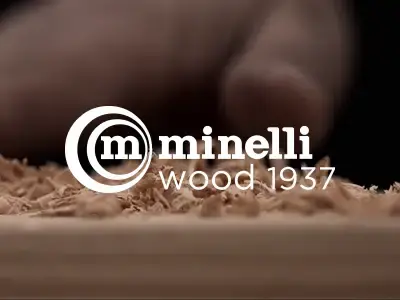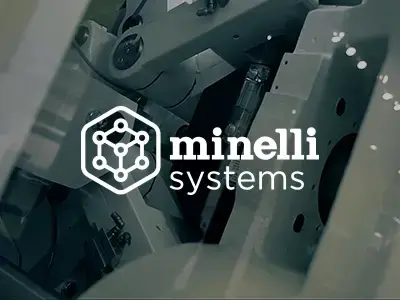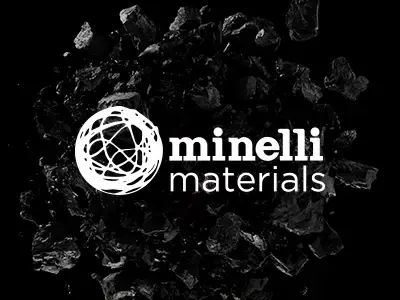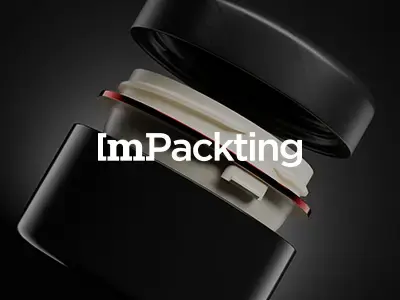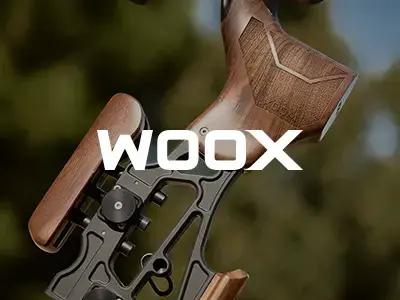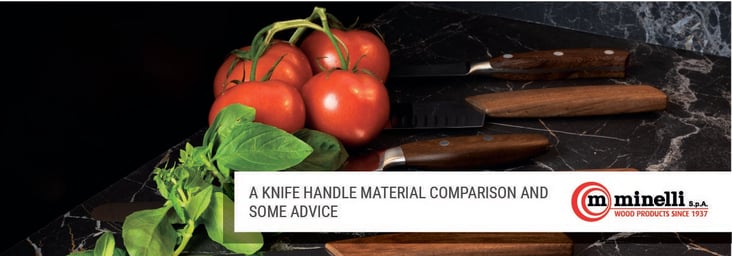 Today, knife handles can be made of a wide variety of natural and synthetic materials, and choosing which ones to offer in your catalogue can be quite difficult.
Today, knife handles can be made of a wide variety of natural and synthetic materials, and choosing which ones to offer in your catalogue can be quite difficult.
In the following article, we will make a knife handle material comparison, offering useful tips on how to satisfy your clients’ requirements and needs.
Looking for knife handle material? A comparison to help you
Whether you want to create a kitchenware knife, a camping knife, or a pocket knife, the material used to make the handle is very important in how comfortable and functional the final product will be.
Even if the blade is fundamental for cutting, the handle is the component that can attract buyers’ attention and convince them to buy. If your manufacturer can create innovative and unique knife handles customizable according to your clients’ preferences, you will be able to offer successful products.

Many people, in fact, are real collectors, and they love to display their collection of knives in their homes. Therefore, the knife handles you offer should be elegant and prestigious besides being top quality and functional.
Let’s discuss the different materials you can choose for a knife handle.
Some considerations about the most common materials for knife handles
Each material has certain strengths and weaknesses. Whether you want to offer items to collectors, kitchenware knives, camping knives, or pocket knives, we will help you determine which one is best to suit your and your clients’ needs.
Stainless Steel
Stainless steel is commonly used for both knife handles and blades. It provides resistance and durability but is quite a heavy material. It can therefore be uncomfortable to hold if used for kitchenware tools or camping knives.
Most stainless-steel handles are smooth, which makes the knife very slippery when wet.
Pros: strong and durable
Cons: heavy and slippery
Aluminum
Aluminium is also very durable and hard and more lightweight than stainless steel. An aluminium handle, however, may be uncomfortable during the winter, as it becomes very cold due to its conductive properties.
Moreover, if not textured correctly, aluminium handles can become very slippery when wet. Being lightweight, they can also be susceptible to scratches and dents.
Pros: strong, lightweight, durable
Cons: slippery, cold, prone to scratches
Titanium
Titanium is the most corrosion-resistant metal and considered lightweight and strong even if it can suffer from scratching more than aluminium.
The main disadvantage of this material is that it is very expensive to machine, which is why it is used just for premium knives.
Pros: strong, lightweight, resistant
Cons: expensive, prone to scratches
Carbon Fiber
Carbon fiber is very strong, yet lightweight and not cheap at all, but it is brittle and can crack if subjected to sharp impacts. Its structure can be compared to a bunch of straws stuck together; it means that carbon fiber is very strong in a single direction but starts to break apart when stressed in other directions.
It is considered a prestigious material for knife handles and popular in aerospace, automotive, and luxury industries. Production can be quite involved, however, which is why it’s rather expensive.
Pros: strong, lightweight, eye-catching
Cons: expensive, brittle
Bone
Bone handles are very popular among knife collectors and used especially for traditional pocket knives. Bone used for knives generally derives from cows, as it is abundant and cheap.
It is a slippery material and porous, however, which makes it susceptible to deformation and cracking. Moisture and temperature may also affect the stability of bone, making it unsuitable for many uses.
Pros: cheap and traditional
Cons: porous, susceptible to cracking, slippery
Wood
Wood is by far the most popular natural handle material for knives and has been used since knives came into existence. It can be used to create kitchenware tools and outdoor knives but can also be collectors’ items, as it adds a lot of beauty to a knife.
It is elegant and prestigious and can be completely customized according to your clients’ requirements by an expert manufacturer. If managed correctly, you can create unique and original shapes, making very innovative objects.
It is also sustainable and eco-friendly, which is a very important factor for most people today.
Look at this video:
A top-quality wooden handle is strong, resistant, and durable, and these characteristics can be enhanced with the right finishes. Besides making it more beautiful and attractive, finishes protect the handle, ensuring very long service.
Wood can be divided into hardwood and softwood. The difference is that hardwood comes from flowering plants (angiosperm), while softwood comes from trees that have needles and produce cones (gymnosperm).
Hardwoods and close-grained essences are generally the preferred choice for knife handles due to their durability, prestige, and resistance.
Of course, there is a wide range of pricing depending on the type and scarcity of the wood used. However, consider that wood doesn’t need moulds, so the initial investment will be much lower if compared with other materials. It means that wood is particularly cost-effective.
It is also a difficult material to manage, so you need an expert manufacturer with the right machines and tools to treat it properly. A reliable supplier will also be able to advise about the best wood essence for your project based on their experience and competency.
Pros: prestigious, comfortable, cost-effective, customizable
Cons: porous and difficult to manufacture without the right tools
In this knife handle material comparison, we have tried to present an objective description of the different materials for knife handles and their advantages and disadvantages.
If you are looking for top-quality wooden handles, the Minelli Group has specialized in wood manufacturing for more than 80 years and can create custom-made wooden components of the highest quality and durability.
Thanks to our sophisticated software and cutting-edge machines, we can satisfy even the most demanding requests to create unique products.
For further information, do not hesitate to contact us!
